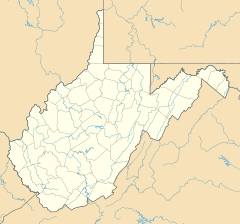Black Betsy, West Virginia facts for kids
Quick facts for kids
Black Betsy
|
|
|---|---|
| Country | United States |
| State | West Virginia |
| County | Putnam |
| Time zone | UTC-5 (Eastern (EST)) |
| • Summer (DST) | UTC-4 (EDT) |
| GNIS feature ID | 1536045 |
Black Betsy is a small, quiet place in Putnam County, West Virginia, United States. It's known as an unincorporated community, which means it doesn't have its own local government like a city or town. Instead, it's managed by the county. Black Betsy is located right on the east bank of the Kanawha River, a major waterway in West Virginia. You can find it along West Virginia Route 62.
Contents
Welcome to Black Betsy!
Black Betsy is a unique spot in West Virginia. It's a place where people live and work, but it's not officially a city or a town. Think of it like a neighborhood that's part of a bigger county. This type of community is common in many parts of the United States.
Where is Black Betsy Located?
Black Betsy is nestled in Putnam County, which is in the western part of West Virginia. The community sits right next to the Kanawha River. This river is very important for the region. It has been used for transportation and trade for many years. The community is also easy to reach by road, as it's located along West Virginia Route 62. This route helps connect Black Betsy to other nearby areas.
The Mystery of the Name
The name "Black Betsy" is quite interesting, and there are many stories about how it came to be. No one knows for sure which story is true, but they are all part of the local history!
Legends and Local Tales
One popular legend suggests that Black Betsy was named after a woman. She was said to be a Black woman who lived in the area a long time ago. She was known for selling goods to the local miners. Another story says that "Black Betsy" was the name of a special product that was made and sold in the community. Some people even believe that the coal mined in the area was called "Black Betsy" because of its dark color. Each person in the community might tell you a slightly different version of these tales. These stories show how communities often create their own unique histories and legends.
See also
 In Spanish: Black Betsy (Virginia Occidental) para niños
In Spanish: Black Betsy (Virginia Occidental) para niños



